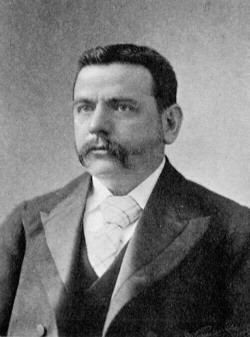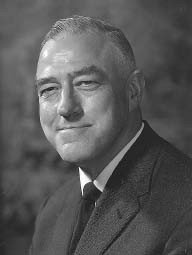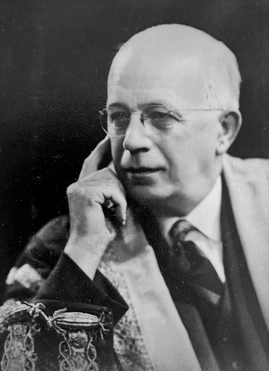Related Research Articles
Kilbarchan is a village and civil parish in central Renfrewshire, in the west central Lowlands of Scotland. It is almost contiguous with Johnstone, about 5 miles or 8 km west of the centre of Paisley. The village's name means "cell (chapel) of St. Barchan". It is known for its former weaving industry.

John Macintyre or Mcintyre FRSE was a Scottish medical doctor who set up the world's first radiology department at the Glasgow Royal Infirmary, in Glasgow.

Sir Michael Francis Addison Woodruff, was an English surgeon and scientist principally remembered for his research into organ transplantation. Though born in London, Woodruff spent his youth in Australia, where he earned degrees in electrical engineering and medicine. Having completed his studies shortly after the outbreak of World War II, he joined the Australian Army Medical Corps, but was soon captured by Japanese forces and imprisoned in the Changi Prison Camp. While there, he devised an ingenious method of extracting nutrients from agricultural wastes to prevent malnutrition among his fellow POWs.

Benjamin Bell of Hunthill FRSE FRCSEd is considered to be the first Scottish scientific surgeon. He is commonly described as the father of the Edinburgh school of surgery, or the first of the Edinburgh scientific surgeons. He published medical works of significance, notably his surgical textbook A System of Surgery which became a best seller throughout Europe and in America. His treatise on venereal disease was one of the early works that suggested syphilis and gonorrhea were different diseases, a hypothesis which was not accepted by mainstream medicine until many decades later. Bell's main contribution to surgical practice was his adage 'save skin', which led to improved rates of wound healing in operations like mastectomy and limb amputation. He was also an early advocate of routine pain relief in surgery.

James Spence FRSE FRCSEd (1812-1882) was a Scottish surgeon. He served as President of the Royal College of Surgeons of Edinburgh 1867/68.
Thomas Jones Mackie CBE FRSE LLD was a noted Scottish bacteriologist; Dean of the Faculty of Medicine, University of Edinburgh; and author of medical research textbooks.
Sir Peter John Morris was an Australian surgeon and Nuffield professor of surgery at the University of Oxford. Morris was President of the Royal College of Surgeons of England, founder of the Oxford Transplant Centre and director of the Centre for Evidence in Transplantation at the Royal College of Surgeons of England.

Charles Frederick William Illingworth was a British surgeon who specialised in gastroenterology. Along with a range of teaching and research interests, he wrote several surgical textbooks, and played a leading role in university and medical administration.

Sir Harold Jalland Stiles was an English surgeon who was known for his research into cancer and tuberculosis and for treatment of nerve injuries.
John Maxwell Anderson FRCS, FRCSED was a Scottish consultant surgeon and cancer specialist whose research focused on tissue transplantation, cancer immunology and chemotherapy.
Prof George Henry Edington FRSE FRCS DL JP TD (1870-1943) was a Scottish surgeon, anatomist and medical author who served as President of both the Glasgow Medico-Chirurgical Society and the Royal Faculty of Physicians and Surgeons of Glasgow 1928 to 1940. He was Honorary Physician to King George V from 1922 to 1927.
John Gibson Fleming FRSE PFPSG (1809-1879) was a Scottish surgeon, medical administrator and President of the Royal College of Physicians and Surgeons of Glasgow 1865 to 1868, and 1870 to 1872.
Prof Robert Maximilian Kenedi FRSE (1921-1998) was a Hungarian-born engineer and bioengineer.

Sir Henry Wade PRCSE FRSE DSO CMG was a Scottish military and urological surgeon. He was elected president of the Royal College of Surgeons of Edinburgh in 1935. His collection of anatomical specimens was donated to Surgeon's Hall in Edinburgh and is known as the Henry Wade Collection.

John Thomson FRS FRSE PRCPE (1765–1846) was a Scottish surgeon and physician, reputed in his time "the most learned physician in Scotland". He was President of the Royal College of Physicians of Edinburgh from 1834 to 1836.

Sir George Husband Baird MacLeod (1828–1892) was Regius Professor of Surgery at Glasgow University. He was Surgeon in Ordinary to Queen Victoria when in Scotland and was knighted by her in 1887.
Alfred Ernest Maylard FRSE PRCPSG FSGS (1855–1947) was born in Northfleet, Kent, England but is known as a Scottish surgeon and expert in abdominal surgery who served as president of the Royal College of Physicians and Surgeons of Glasgow. He was the eldest son of Alfred Martin Maylard, a respected London merchant and Ellen Mira French Maylard. A keen mountaineer, he was also co-founder of the Scottish Mountaineering Club in 1889. In authorship he is referred to as A. E. Maylard.

Sir Walter Mercer KBE FRSE FRCSEd FRCPE LLD was a Scottish orthopaedic surgeon. He was President of the Royal College of Surgeons of Edinburgh from 1951 to 1956. He was affectionately known as 'Wattie.' His collection of anatomical specimens was donated to Surgeon's Hall in Edinburgh, and is now known as the Walter Mercer Collection.
Colonel John James McIntosh Shaw was a Scottish 20th-century military surgeon who served in both World Wars, and pioneered plastic surgery in the 1920s.
George Ritchie Thomson was a Scottish military surgeon and expert on tropical medicine who served in the Second Boer War and First World War and advanced public health in South Africa.
References
- 1 2 C D Waterston; A Macmillan Shearer (July 2006). Former Fellows of The Royal Society of Edinburgh, 1783–2002: Part 1 (A–J) (PDF). Royal Society of Edinburgh. ISBN 090219884X. Archived from the original (PDF) on 24 January 2013. Retrieved 18 September 2015.
- ↑ "Archived copy" (PDF). Archived from the original (PDF) on 22 November 2015. Retrieved 7 July 2016.
{{cite web}}: CS1 maint: archived copy as title (link) - ↑ Hilliard, Ernest G. (24 November 2015). "Professor Thomas Gibson (1915-1993) – Pioneer of Plastic Surgery".
- ↑ Biographical Index of Former Fellows of the Royal Society of Edinburgh 1783–2002 (PDF). The Royal Society of Edinburgh. July 2006. ISBN 0-902-198-84-X.